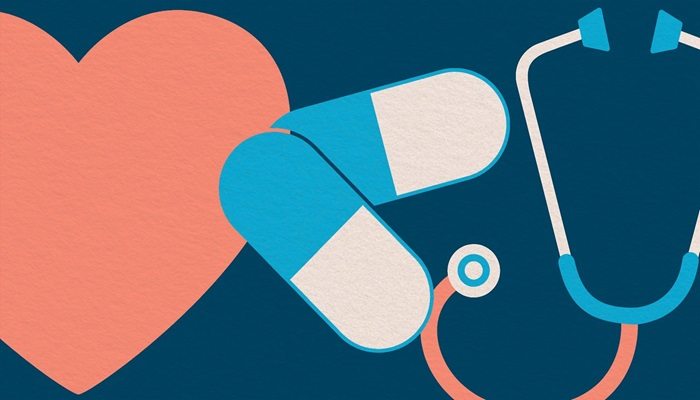Among the most commonly discussed conditions are dyslipidemia and hyperlipidemia. While these terms are often used interchangeably, they refer to distinct concepts in lipid metabolism. This article aims to clarify the differences between dyslipidemia and hyperlipidemia, exploring their definitions, causes, symptoms, and treatment options.
Lipid metabolism involves various types of fats in the blood, primarily cholesterol and triglycerides. These lipids play essential roles in bodily functions but can lead to serious health issues when imbalanced. Cardiovascular diseases, including heart attacks and strokes, are often linked to abnormal lipid levels. Therefore, understanding these conditions is vital for prevention and management.
What Is The Dyslipidemia?
Dyslipidemia is a broad term that encompasses any abnormality in lipid levels. This includes both elevated and reduced levels of lipids in the blood. Dyslipidemia can manifest as:
High levels of low-density lipoprotein (LDL) cholesterol, often referred to as “bad” cholesterol.
Low levels of high-density lipoprotein (HDL) cholesterol, known as “good” cholesterol.
Elevated triglyceride levels, which can also contribute to cardiovascular risk.
In contrast, hyperlipidemia specifically refers to elevated lipid levels in the blood. It is a subset of dyslipidemia characterized by high concentrations of one or more types of lipids, primarily LDL cholesterol or triglycerides.
Hyperlipidemia does not address low lipid levels;rather, it focuses solely on excess.
Key Differences
1. Scope of Condition
Dyslipidemia: This term covers a range of lipid imbalances, including both high and low lipid levels. It serves as an umbrella term for various lipid disorders.
Hyperlipidemia: This condition specifically indicates an excess of lipids in the blood. It does not encompass low lipid levels.
2. Types of Lipids Affected
Dyslipidemia can involve:
High LDL cholesterol (hypercholesterolemia)
Low HDL cholesterol (hypoalphalipoproteinemia)
High triglycerides (hypertriglyceridemia)
Hyperlipidemia typically involves:
Elevated LDL cholesterol
Elevated triglycerides
It does not consider low HDL cholesterol as part of its definition.
SEE ALSO: When Is The Best Time to Exercise for High Cholesterol
3. Clinical Implications
Both dyslipidemia and hyperlipidemia are associated with increased cardiovascular risk; however, their implications may differ slightly due to their definitions:
Individuals with dyslipidemia may experience a broader range of health issues due to both high and low lipid levels.
Those with hyperlipidemia are primarily at risk due to excess lipids, particularly LDL cholesterol and triglycerides.
4. Treatment Approaches
The treatment for dyslipidemia and hyperlipidemia can overlap but may differ based on specific lipid abnormalities:
Dyslipidemia Treatment:
Focuses on achieving a balance among all types of lipids.
May involve medications like statins to lower LDL or increase HDL.
Lifestyle changes such as diet modification and exercise are crucial.
Hyperlipidemia Treatment:
Primarily targets reducing elevated lipid levels.
Statins are commonly prescribed to lower LDL cholesterol.
Emphasis on dietary changes that reduce overall fat intake and increase physical activity.
Causes
Dyslipidemia
Dyslipidemia can arise from various factors:
Genetic Factors: Some individuals inherit conditions that predispose them to abnormal lipid levels.
Lifestyle Choices: Poor diet, lack of physical activity, smoking, and excessive alcohol consumption contribute significantly.
Medical Conditions: Diseases like diabetes, hypothyroidism, and chronic kidney disease can lead to dyslipidemic profiles.
Hyperlipidemia
Hyperlipidemia often results from similar causes but focuses on excess:
Dietary Intake: High consumption of saturated fats and trans fats can lead to elevated LDL cholesterol and triglycerides.
Obesity: Increased body weight is closely linked to higher triglyceride levels.
Sedentary Lifestyle: Lack of exercise contributes to poor lipid profiles by reducing HDL cholesterol levels.
Symptoms
Both dyslipidemia and hyperlipidemia are often asymptomatic until they lead to severe complications such as cardiovascular diseases.
However, when symptoms do occur:
Dyslipidemia Symptoms
Symptoms may vary based on whether there are high or low lipid levels:
High LDL or triglycerides may lead to:
- Chest pain
- Fatigue
- Shortness of breath
Low HDL may not present specific symptoms but increases cardiovascular risk over time.
Hyperlipidemia Symptoms
Hyperlipidemia typically does not present noticeable symptoms until it leads to significant health issues such as:
Chest pain due to coronary artery disease
Xanthomas (fatty deposits under the skin)
Pancreatitis in cases of extremely high triglyceride levels
Diagnosis
Diagnosis for both conditions typically involves blood tests that measure different types of lipids:
Lipid Panel Test: This test measures total cholesterol, LDL cholesterol, HDL cholesterol, and triglycerides.
Interpretation of Results:
Normal total cholesterol: Less than 200 mg/dL
Borderline high total cholesterol: 200–239 mg/dL
High total cholesterol: 240 mg/dL or higher
Optimal LDL level: Less than 100 mg/dL
High LDL level: 160 mg/dL or higher
Normal triglyceride level: Less than 150 mg/dL
High triglyceride level: 200 mg/dL or higher
Regular screening is recommended for adults over age 20 at least once every four to six years.
Treatment Options
Lifestyle Modifications
For both dyslipidemia and hyperlipidemia, lifestyle changes play a critical role in management:
Dietary Changes:
Increase intake of fruits, vegetables, whole grains, and healthy fats (such as those found in olive oil).
Reduce saturated fats found in red meat and full-fat dairy products.
Physical Activity:
Aim for at least 150 minutes of moderate aerobic exercise each week.
Weight Management:
Achieving a healthy weight reduces overall cardiovascular risks.
Medications
When lifestyle changes alone are insufficient:
For Dyslipidemia:
Statins (e.g., atorvastatin) for lowering LDL cholesterol.
Fibrates (e.g., fenofibrate) for lowering triglycerides.
Niacin for increasing HDL cholesterol.
Conclusion
In summary, while dyslipidemia and hyperlipidemia are related conditions concerning lipid metabolism, they represent different aspects of lipid imbalance. Dyslipidemia encompasses a broader spectrum that includes both high and low lipid levels, while hyperlipidemia specifically refers to elevated lipid concentrations.
Related topics:


